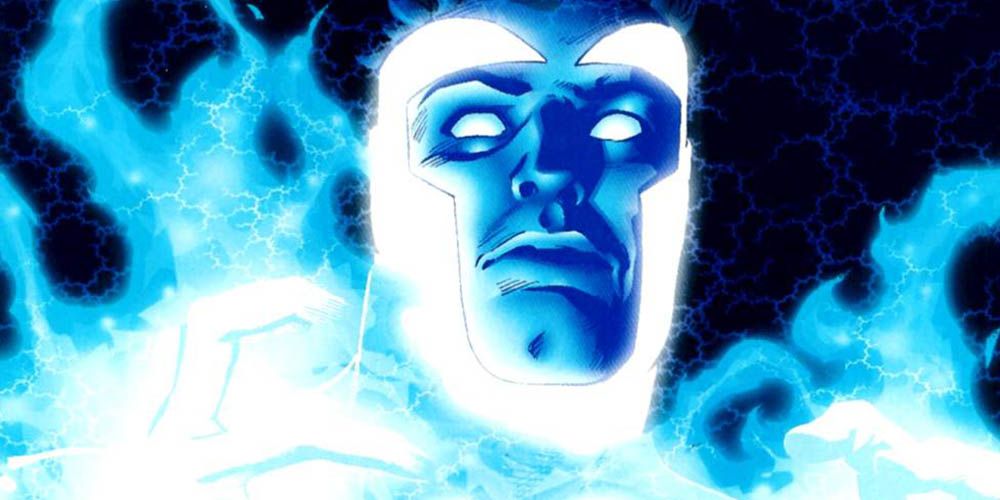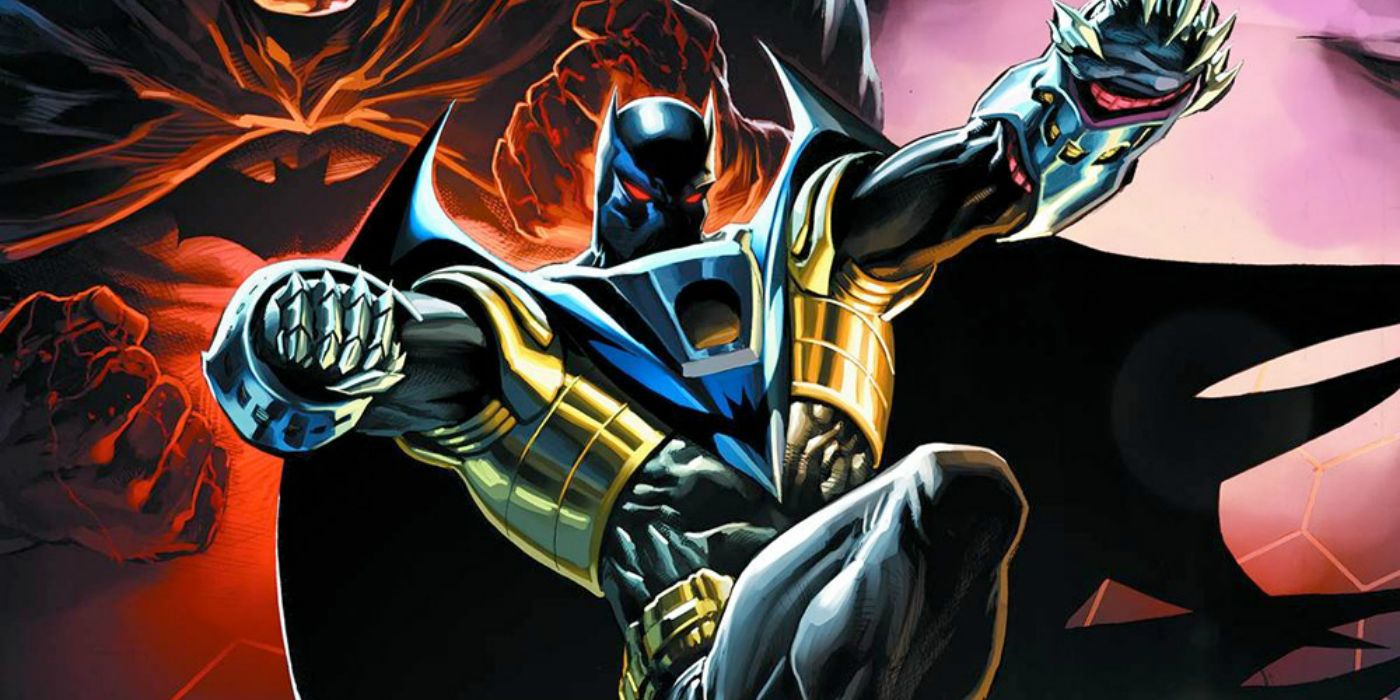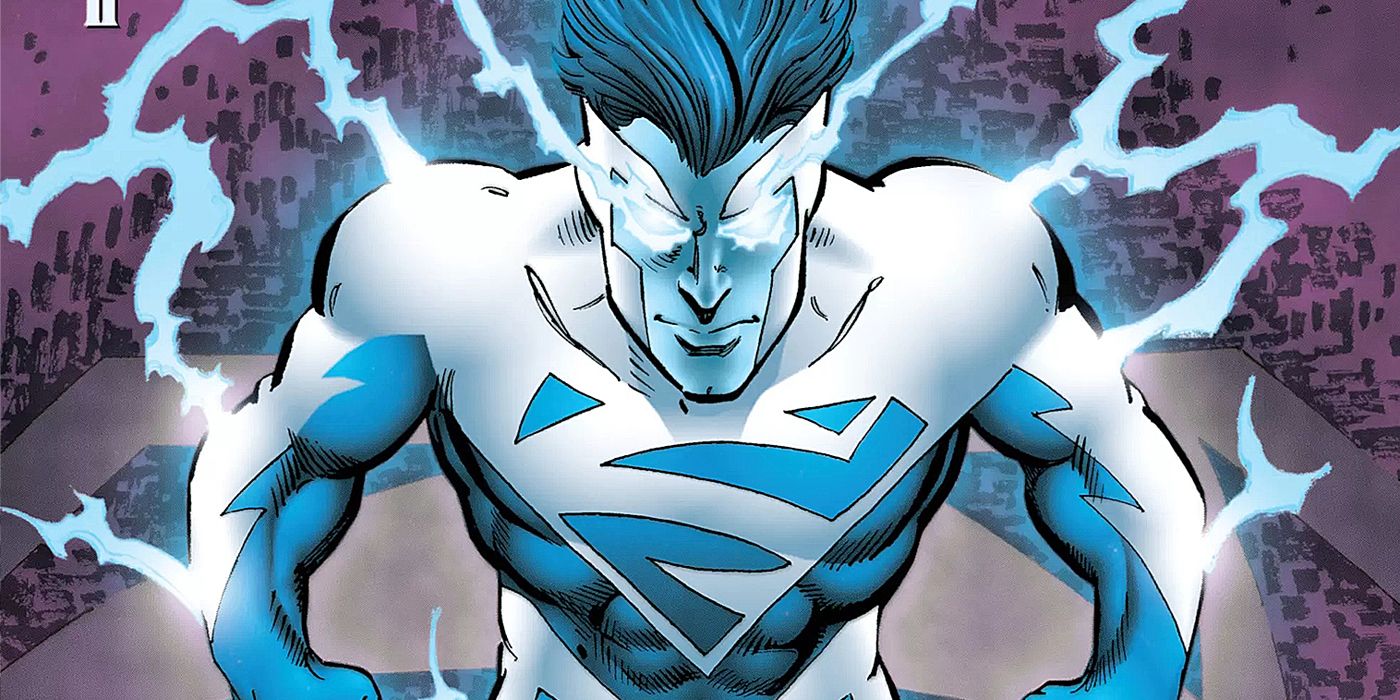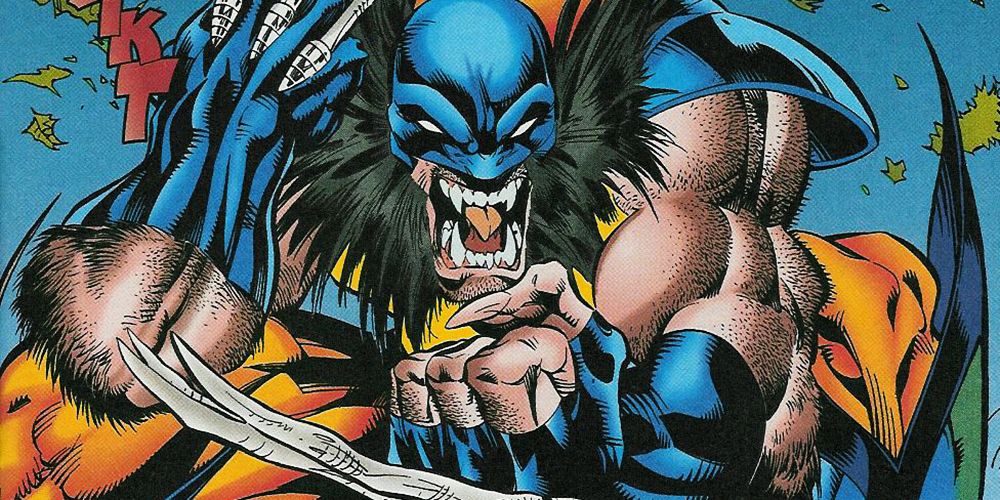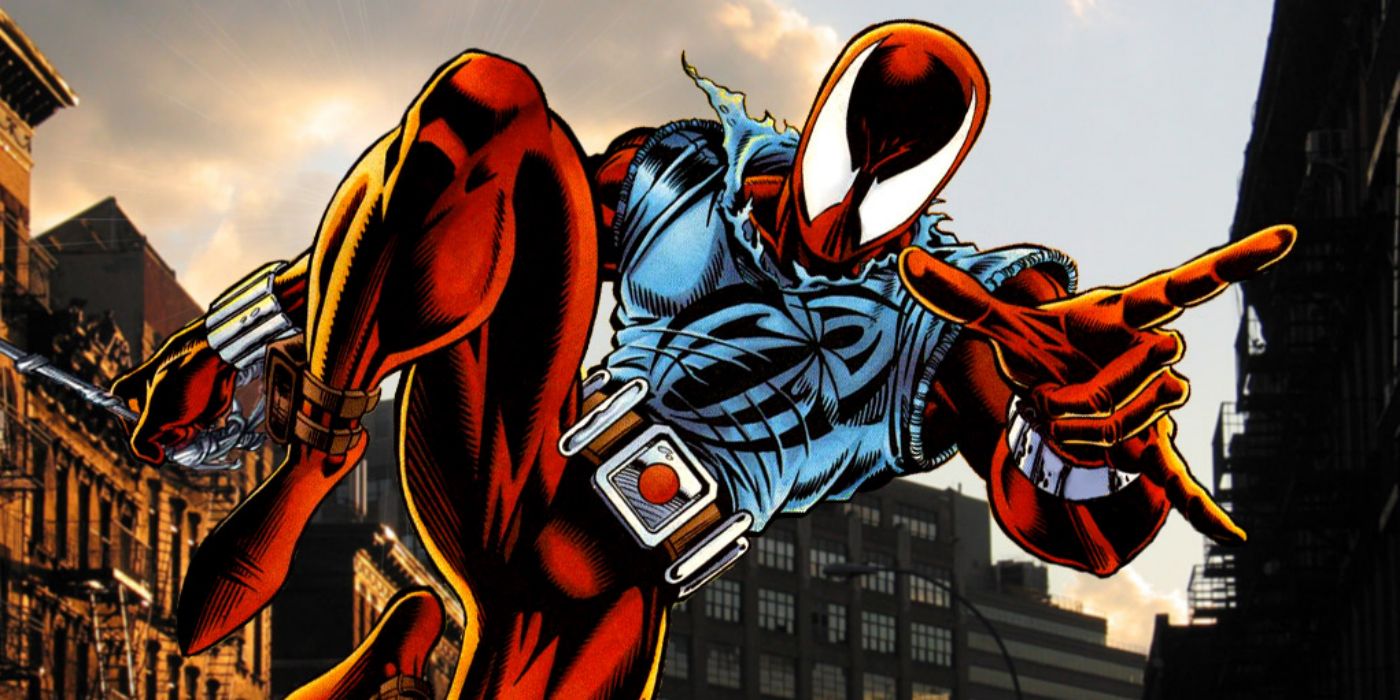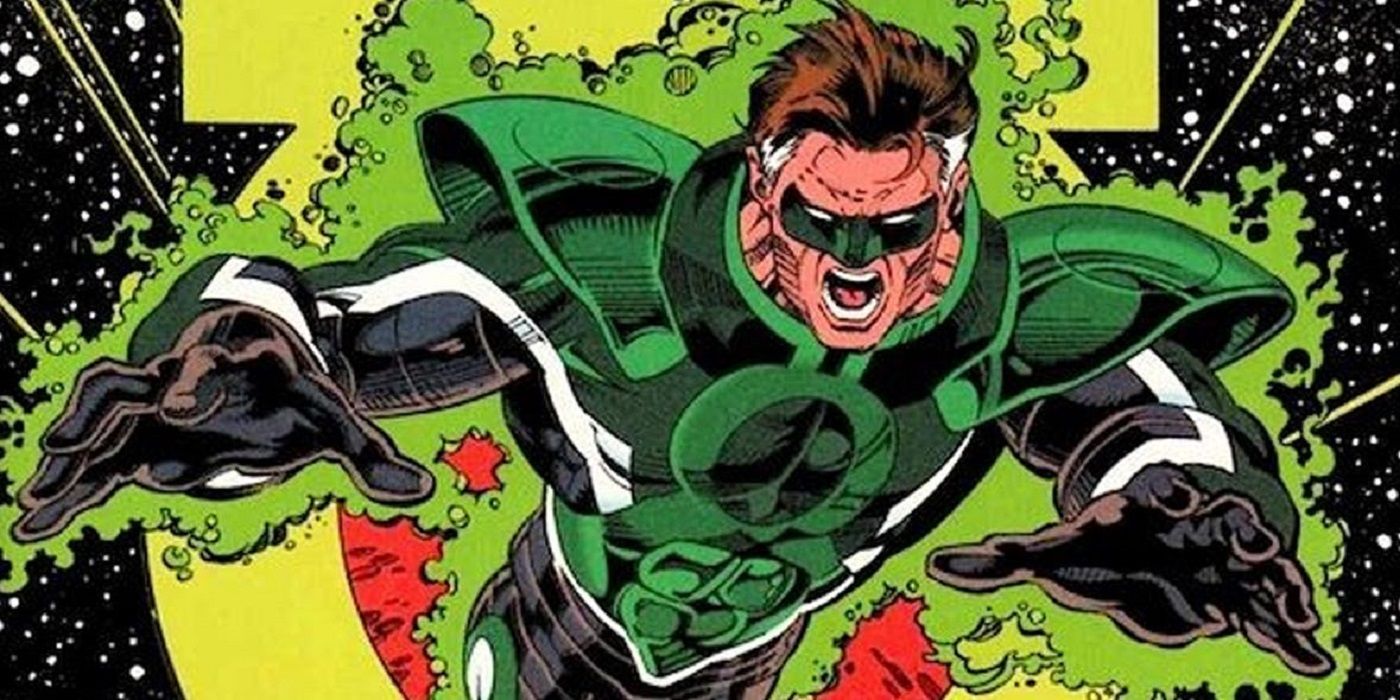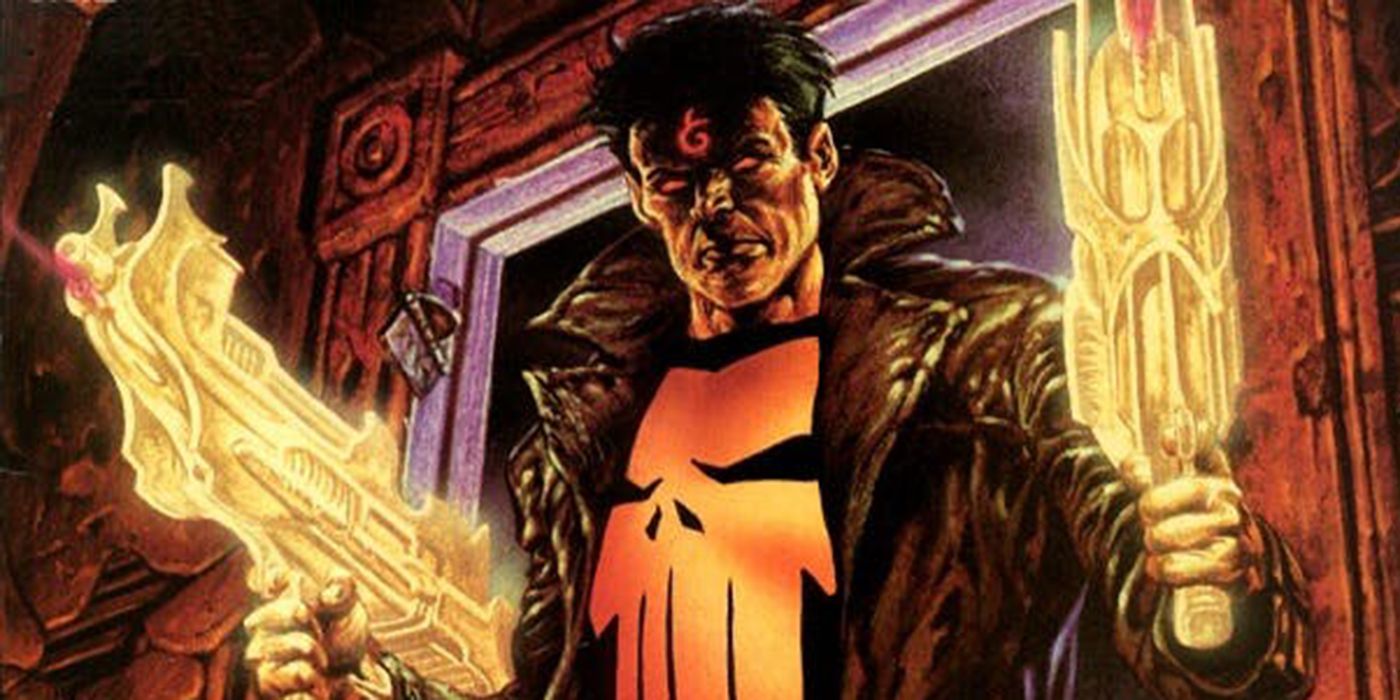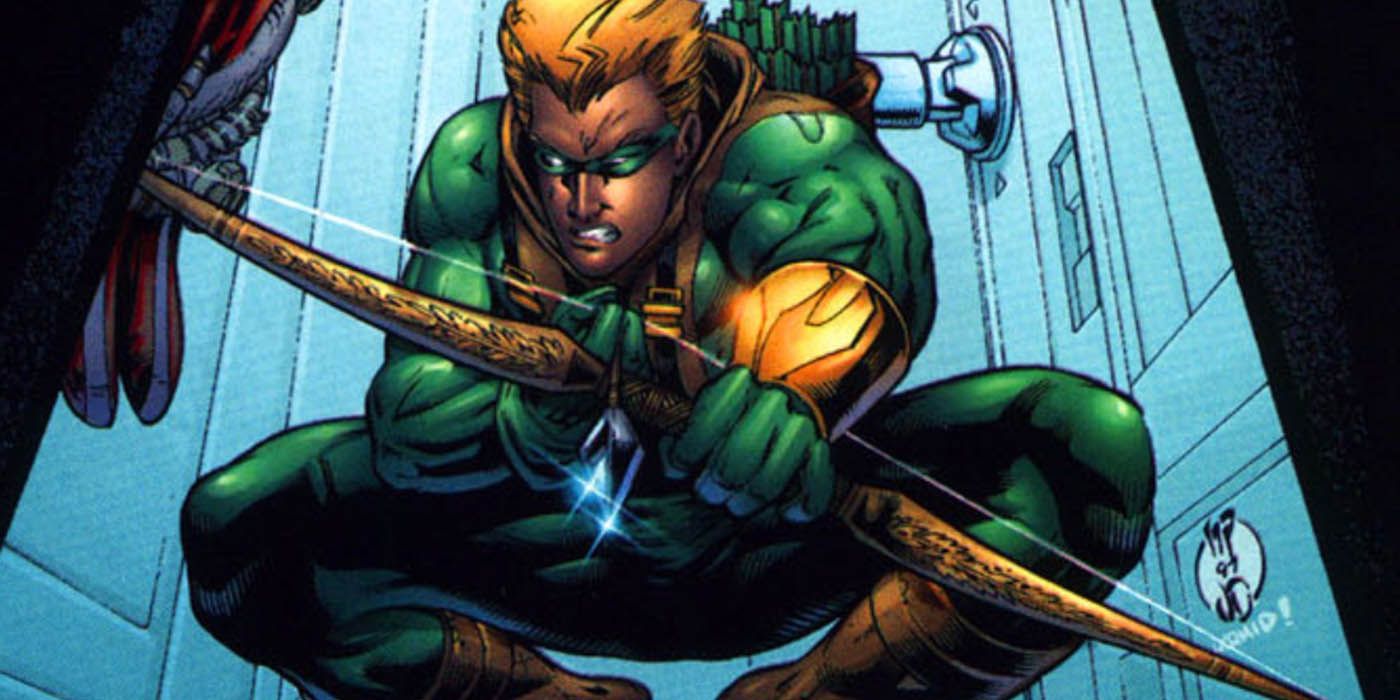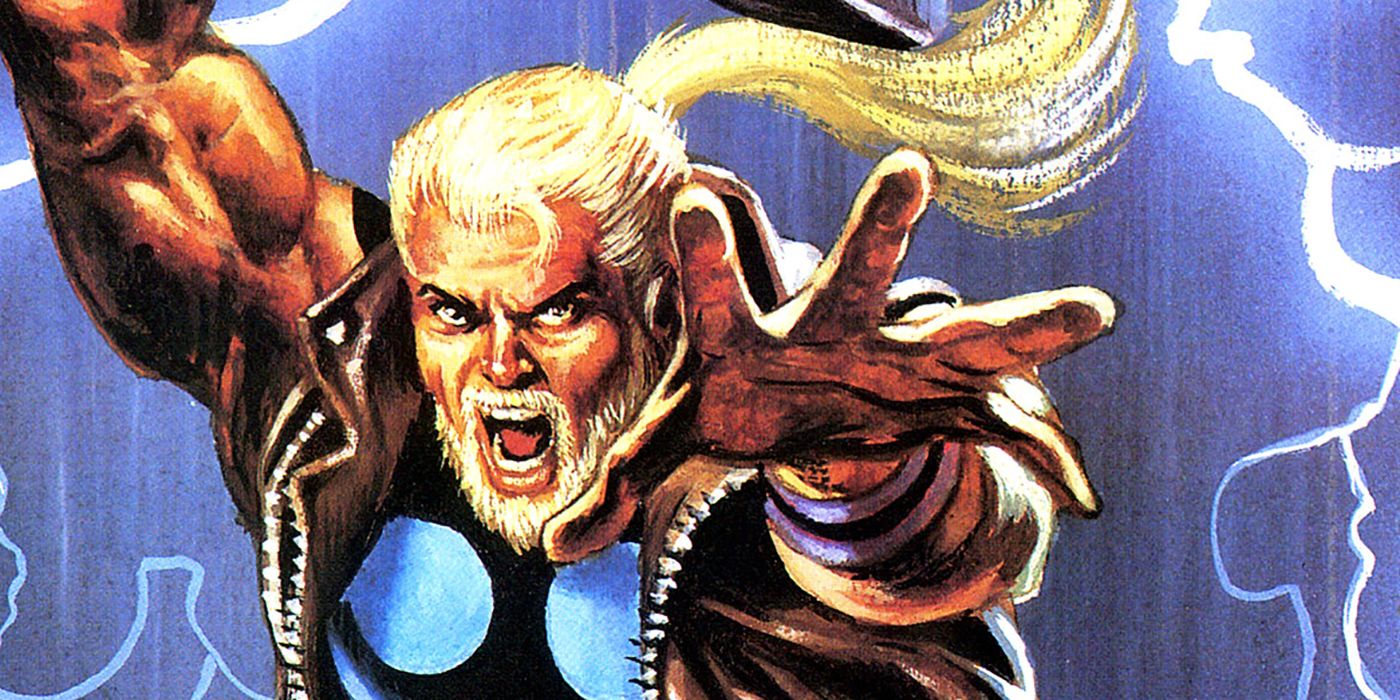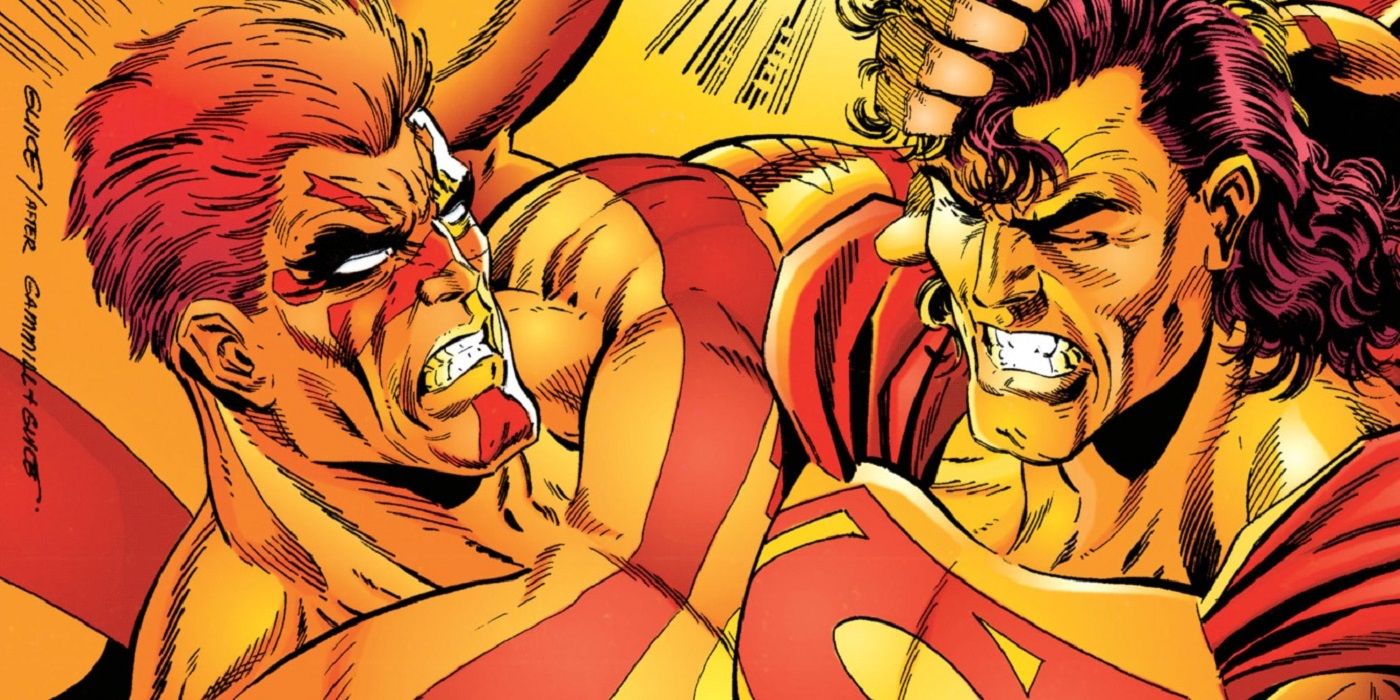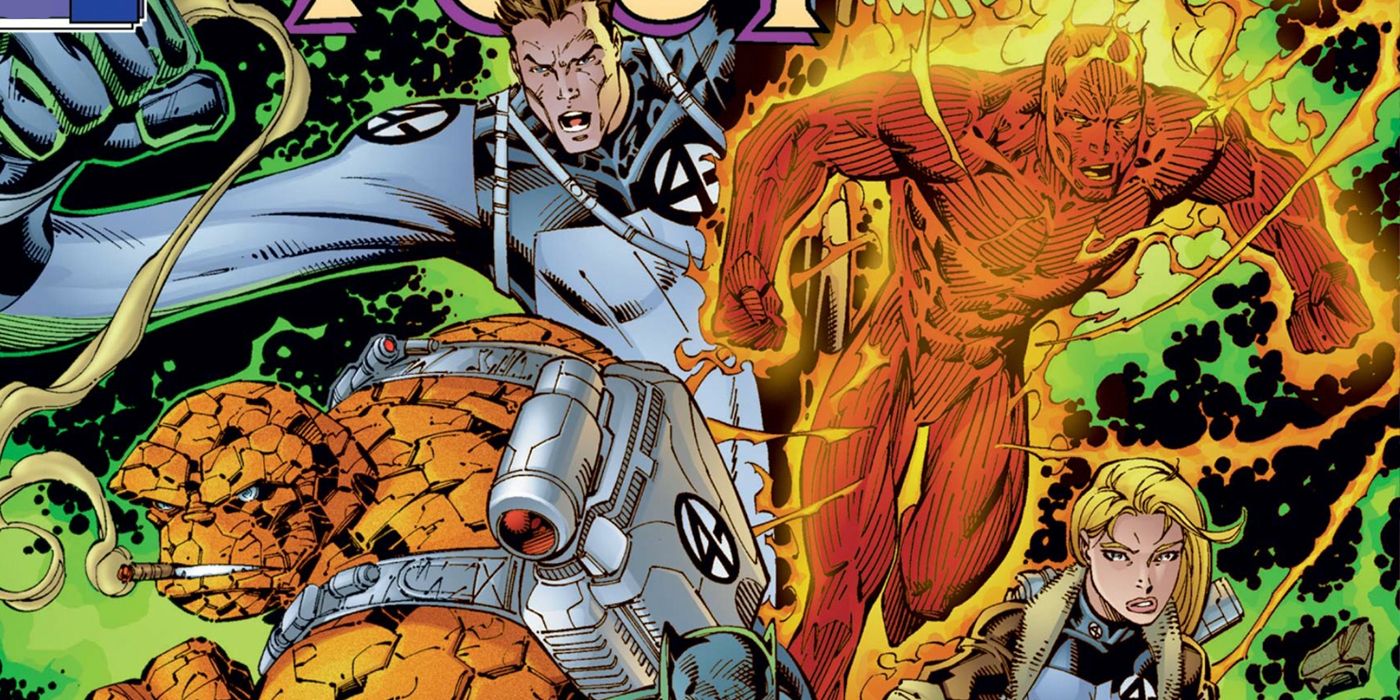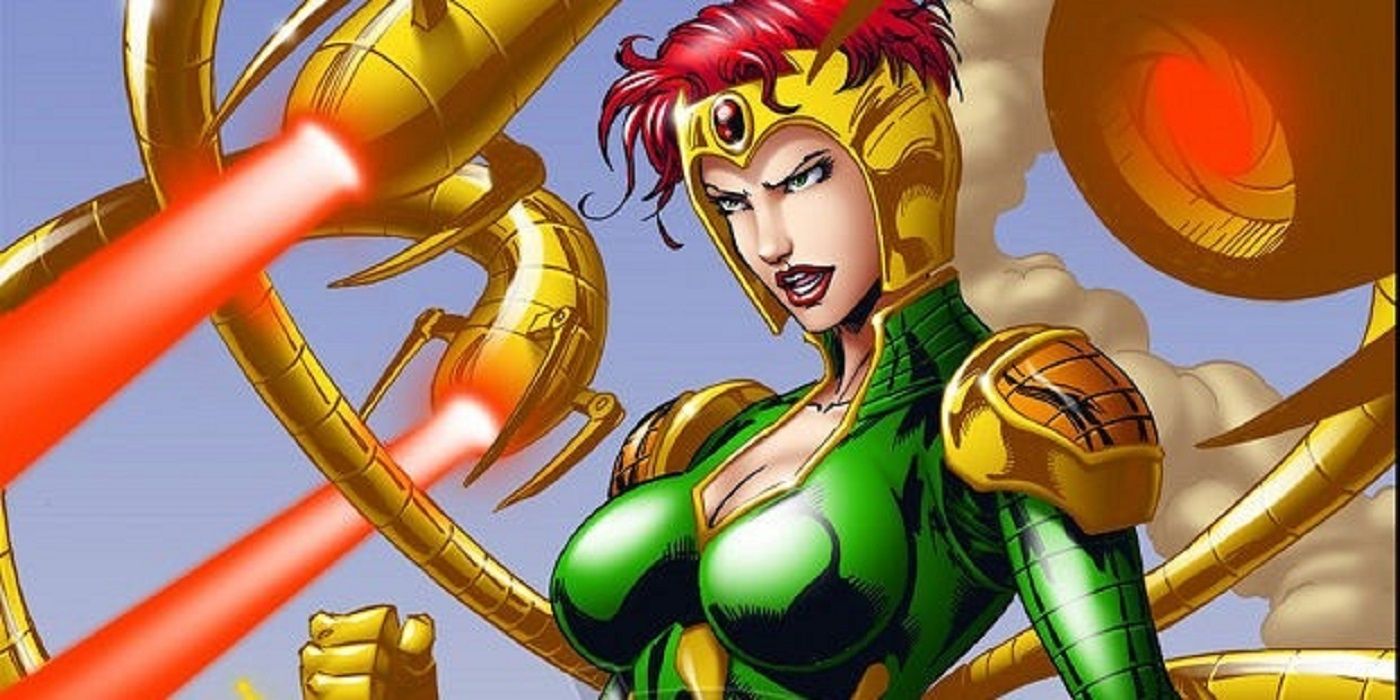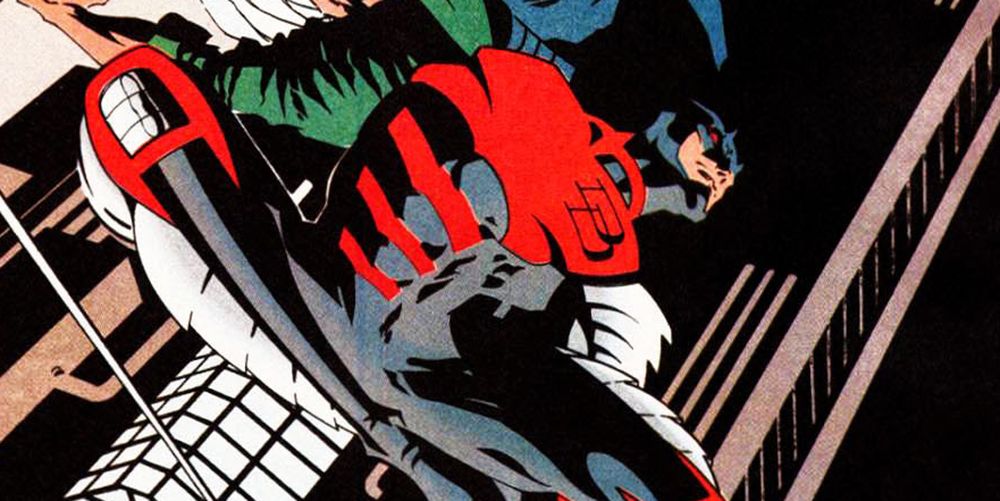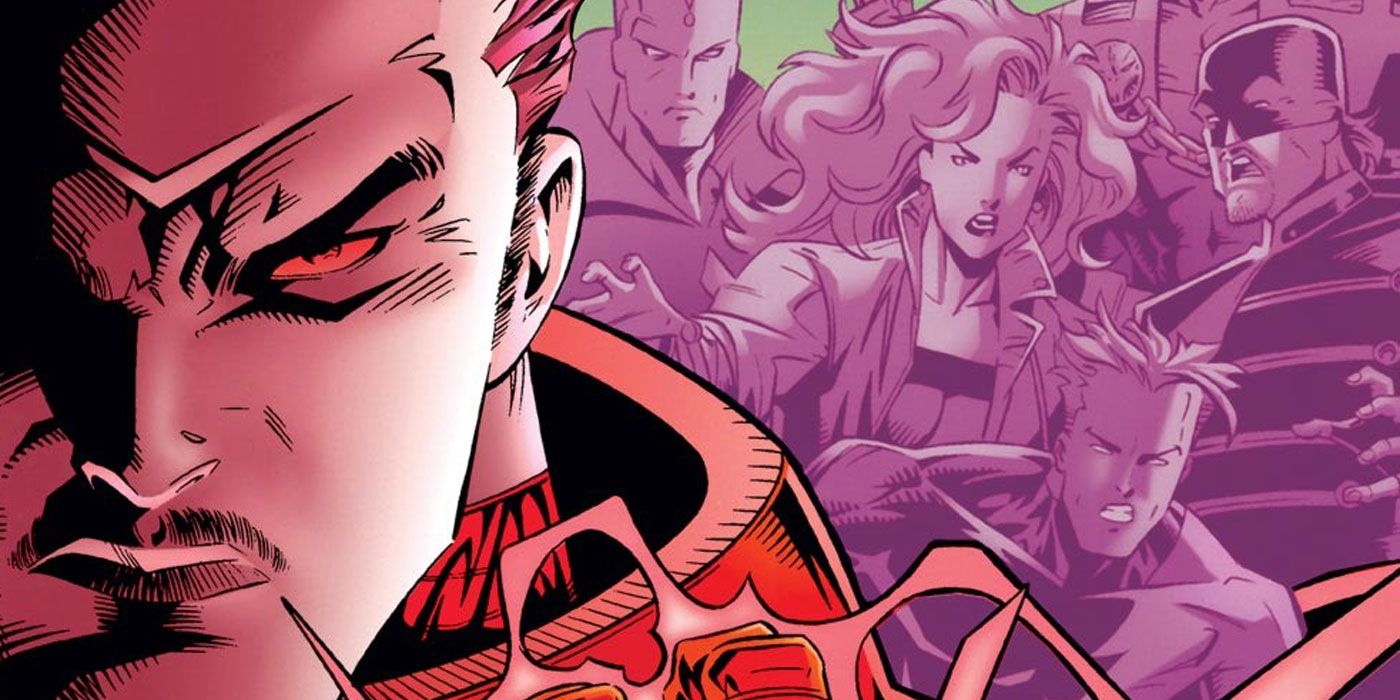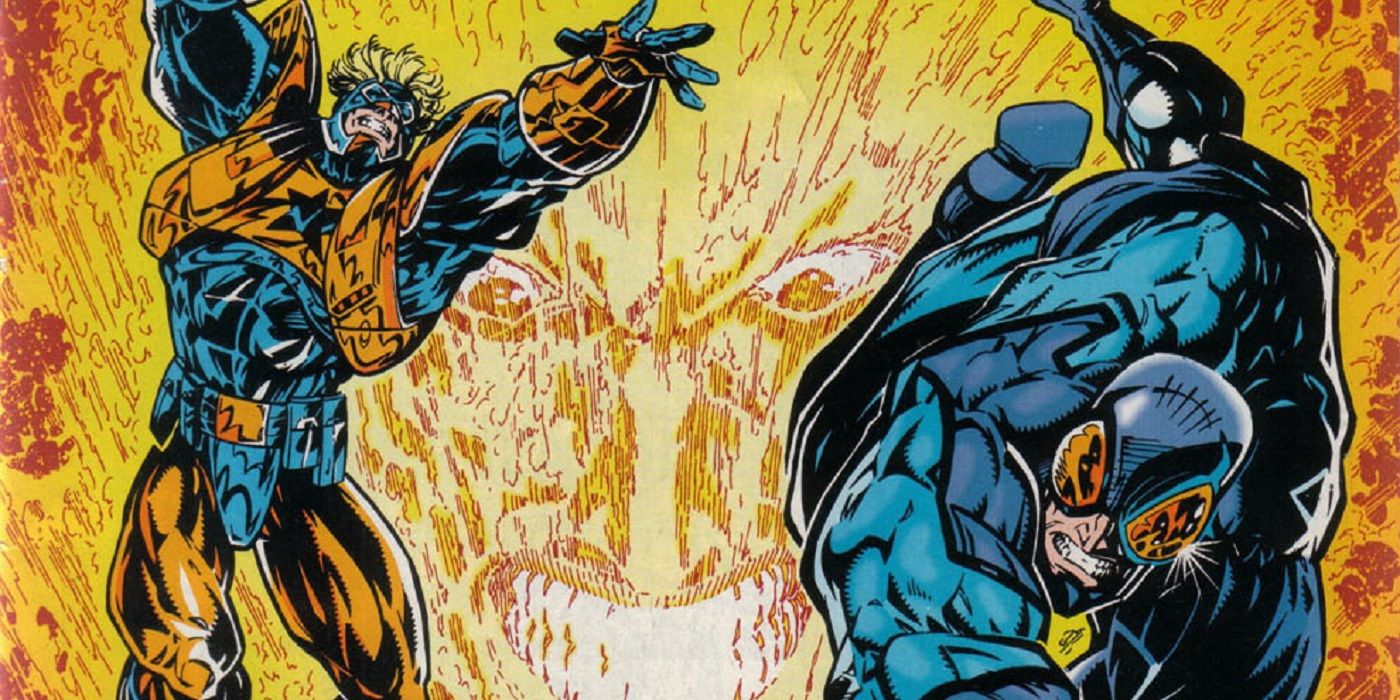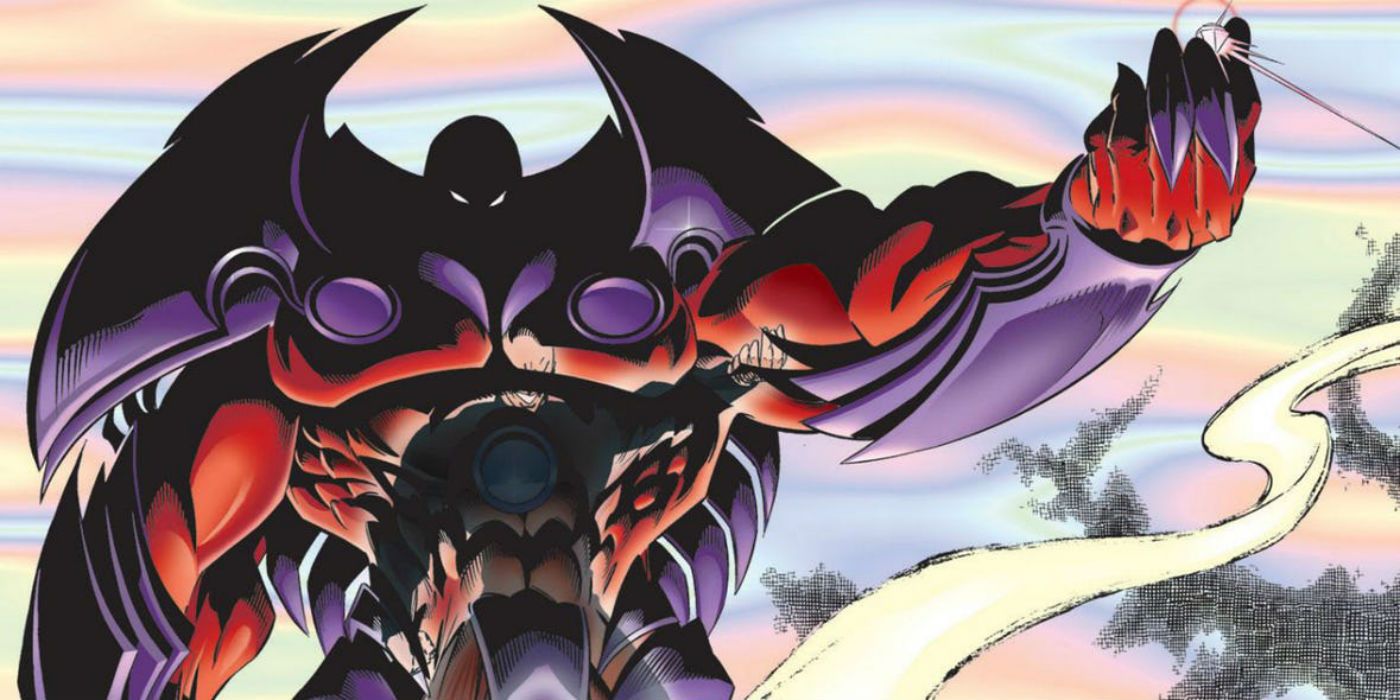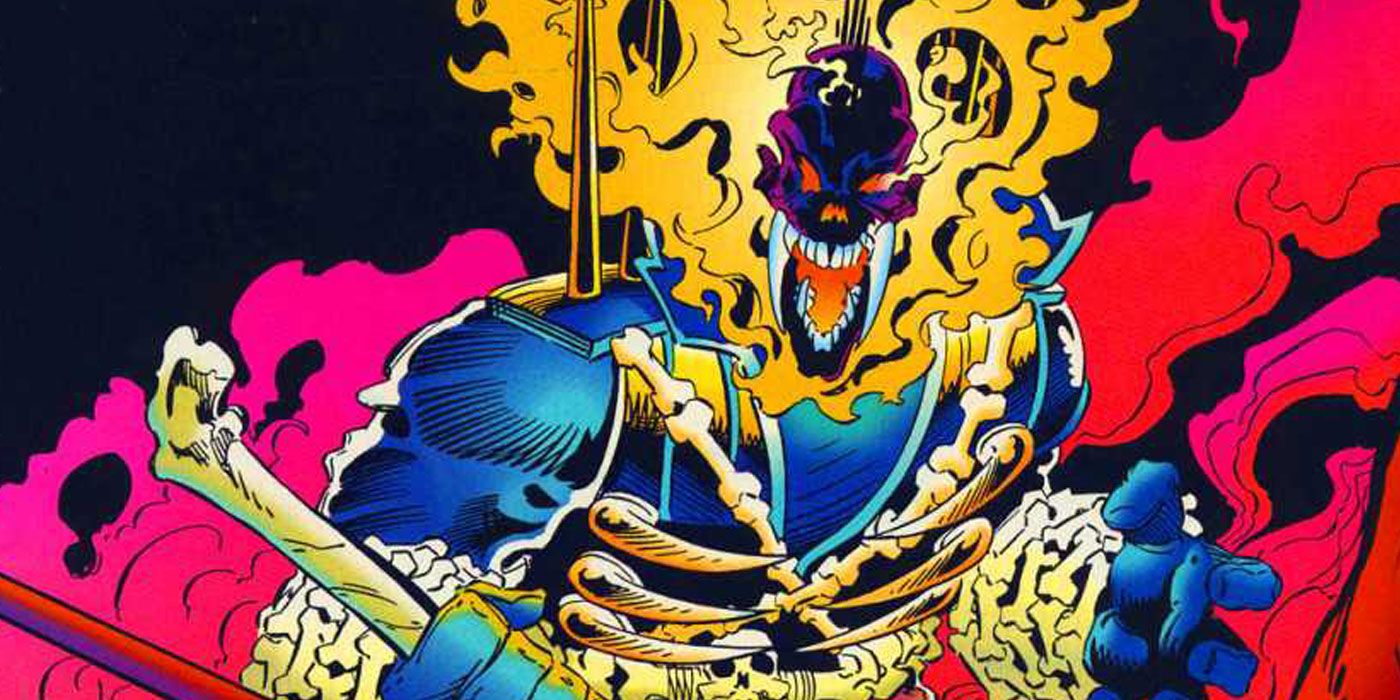The 90s were a fascinating time in the world of comic books. The industry began the decade with the biggest boom period ever seen, with certain issues selling millions of copies. In fact, 1991's X-Men #1, which was written by Chris Claremont and drawn by Jim Lee, sold a mind-boggling 8.1 million copies -- a figure that is unlikely to ever be topped. Image Comics also debuted around this period, and the books they produced (Spawn, Youngblood, Savage Dragon) made the seven former Marvel artists household names. However, it was all inflated by the speculator market, with people buying multiple copies of every issue with the belief they'd be worth a lot of money one day. When that day never came, the industry nearly imploded, and Marvel Comics was almost completely out of money in 1996.
Many of the comics made by Marvel and DC during this period are not looked back upon fondly these days. Characterized by grim n' gritty antiheroes, excessive violence, exploited female characters, impossibly proportioned muscle-men and costumes with insane amounts of unnecessary pouches, the stories of this era leave something to be desired. Given that the cultural attitude of the period was defined by jaded, cynical members of 'Generation X', it's no surprise that both major companies also felt the need to revamp many of their long-running characters for the modern times. This led to many beloved characters having their cosy status quo's shot to hell, all while a general extreme '90s attitude was applied to their stories. And sadly, most of these makeovers didn't work at all! Here are some of the most extreme '90s makeovers that almost tarnished popular characters.
19 BATMAN
Jean-Paul Valley was introduced in Batman: Sword Of Azrael #1 in October 1992. A university student who is unaware that he is actually a psychologically conditioned sleeper assassin for the religious secret society 'The Sacred Order Of Saint Dumas', he was the natural choice to succeed Bruce Wayne as Batman whenever Bane broke his spine during the "Knightfall" storyline.
Well it turns out that Valley ended up being the worst possible choice. While, yes, Bruce choosing a mentally unstable guy he barely knew to carry the mantle of the Bat instead of Dick Grayson is highly questionable, it did at least lead to one of the most famous Bat-stories of the modern era. But, let's be honest, it was a very risky move from DC creative!
18 SUPERMAN
Superman went through a few extreme makeovers in the '90s. The first upheaval was when he was ended by Doomsday and four impostor Supermen (Steel, The Eradicator, Superboy and Cyborg Superman) vied for status as protector of Metropolis. The real Superman returned in October 1993, and things went back to (relative) normality.
That is, until 1997, when Superman developed energy-based abilities when he was temporarily deprived of the solar energy he usually drew power from. He then had to wear a blue and white containment suit to stop the energy dispersing, and this look became known to sneering fans as 'Electric Blue Superman'. The new look was generally despised and lasted a mere 13 issues.
17 WOLVERINE
X-Men #25 was the conclusion of the major crossover event 'Fatal Attractions', a story marking the 30th anniversary of Marvel's merry mutants. In it, Magneto forcibly tore the adamantium from Wolverine's skeleton. It caused Logan's healing factor to burn out and he barely survived. It led him to discover that his claws, which he had always assumed were an addition of the Weapon X program, were actually made of bone, and over time he began to regress into a more animalistic, primitive state.
It turned out the adamantium had been holding his natural bestial mutation back, so without it, he would become more and more feral. It was all a bit weird and fans were relieved when Apocalypse bonded the adamantium to Logan again!
16 SPIDER-MAN/SCARLET SPIDER
The '90s was a crazy time in comic books. Sales ballooned to insane numbers, Image revolutionized the industry, and Marvel and DC gave most of their major characters at least one status quo obliterating story. Perhaps the one that angered fans the most was "The Clone Saga" (1994 to 1996).
Picking up on story threads from a clone story written by Gerry Conway in the '70s, this saga brought back Peter Parker's clone Ben Reilly, who took up the superheroic identity of Scarlet Spider. Medical testing then suggested Ben was, in fact, the real Peter Parker, so Peter retired from crime-fighting... until the relentless backlash from fans caused Marvel to say Norman Osborn had falsified records to break Peter's spirit.
15 HAL JORDAN
As far as extreme makeovers go, Hal Jordan becoming Parallax has to be the most extreme of all. Break Batman's back? That's pretty big. End Superman? Huge. Make Spider-Man a clone? That's annoying. But writer Ron Marz fundamentally changed the nature of one of DC's greatest heroes in his 1994 story 'Emerald Twilight', in which Hal Jordan became an insane supervillain who went on a rampage that included many of the title's longtime supporting characters (Sinestro, Kilowog, all of the Guardians except Ganthet).
Thinking back on it now, it's genuinely astonishing that DC editorial allowed such a brave (but controversial) story to happen, and it took a full decade for Jordan to become a Green Lantern again.
14 THE PUNISHER
These days The Punisher is most closely associated with the Garth Ennis/Steve Dillon version of the character, which first blew fans away with the Marvel Knights 'Welcome Back Frank' storyline in 2000/01. This took Frank Castle back to basics, which was very welcome at the time as it followed several years of misguided attempts to revamp him.
For example, the 1998 miniseries The Punisher: Purgatory saw Frank end himself, before being resurrected by the guardian angel that failed to save his family. The angel imbued him with supernatural powers and he was tasked with taking out demons on heaven's behalf. Unfortunately, not even a Wolverine team-up could save this hated concept.
13 WONDER WOMAN
One of the common things in the worst '90s comics was an ill-advised obsession with making every character 'cool'. The '90s was characterized by a rebellion against established order and a sarcastic rejection of wholesome heroes of the past, so Wonder Woman's red, white and blue costume had to go.
Readers didn't want to read about a hero draped in the colors of the American flag, fighting for all that was good in the world; rather, they wanted a woman in a leather jacket with biker shorts and an open jacket! Thankfully, this new look didn't last very long and is now looked back upon as one of the worst makeovers ever inflicted upon a beloved character.
12 GREEN ARROW
Connor Hawke first appeared in 1994's Green Arrow #0. He was studying at a monastery that Oliver Queen went to when looking for peace in the aftermath of best friend Hal Jordan becoming Parallax. Connor was a fan of Green Arrow, and he helped Oliver find enough peace that he could venture out into the world again.
Connor then served as Ollie's sidekick for a while, before it was revealed he was actually Ollie's son from a college dalliance. He took over as the Emerald Archer when his father perished in 1995's #101, but his run only lasted a further 36 issues before cancellation. He stuck around during Kevin Smith and Phil Hester's excellent run on the title, but hasn't been used at all since DC Rebirth.
11 MAGNETO
Over the years, Magneto has flipped flopped between heroism and villainy more times than fans can count. Perhaps the most questionable period was when Joseph, a younger clone of Magneto, joined the X-Men for a short period. The heroes thought he was actually an amnesiac Erik Lehnsherr, when in reality he was an amnesiac clone created by Brotherhood Of Evil Mutants member Astra.
Joseph formed a bond with Rogue while on the team (which the real Magneto had also previously done) and eventually had to sacrifice himself to stop the Magneto when he threatened the Earth by trying to merge with the magnetosphere to gain ultimate power. Which, really, makes no sense at all when you think about it -- just like Joseph's entire backstory.
10 THUNDERSTRIKE
Batman, Superman, Spider-Man and Green Arrow weren't the only heroes replaced (for a while) in the '90s by other people taking up their mantle. In 1991's Thor #431, the Odinson was separated from Eric Masterson by Heimdall, who also transformed Masterson into the new Thor! What do we mean by 'separated', we hear you ask?
Well, Masterson was a mortally wounded architect who was earlier given Thor's form and powers by Odin, who sealed the real Thor within Eric's mind. So when Thor was separated from him, Masterson became 100% true Thor. He then joined the Avengers and later became known as Thunderstrike when the real Thor returned, before he was eventually taken out and sent into the afterlife by Odin. Bizarre.
9 GUY GARDNER: WARRIOR
Guy Gardner has always been an abrasive personality. Never the most popular Green Lantern amongst fans (or even fellow heroes in the DCU), Guy was given an extreme makeover of the lamest kind in the '90s. When Guy fought Parallax on Oa, his Power Ring was destroyed and one of his eyes was punched out of his head.
He spent three weeks in a coma before awakening. He realized he needed new means of acquiring power, so he travelled to the Amaon and drank from the 'Chalice of the Warrior'. This activated alien DNA, which had been implanted in his bloodline a millennium ago by the Vuldarians, and he found he could now shapeshift and morph his arms into weapons. Weapon arms! Totally extreme, dude!
8 HEROES REBORN
In 1996, Marvel took an unprecedented gamble and handed the reigns of four of their major titles over to Jim Lee and Rob Liefeld, two of the seven artists who had previously jumped ship from the House Of Ideas to form the all-conquering Image Comics.
Lee and his Wildstorm studio revamped Fantastic Four and Iron Man, and Liefeld (whose own studio was appropriately named Extreme Studios) took over The Avengers and Captain America. Dubbed "Heroes Reborn", the new titles took place in a pocket universe separate from normal Marvel continuity, and some of the changes made to characters angered fans. Liefeld was even released from his contract after only six issues!
7 LADY OCTOPUS
Created in 1995 by J.M. DeMatteis and Angel Medina, Carolyn Trainer, aka Lady Octopus, was an adoring student of Otto Octavius. When he was ended by Kaine (a deformed clone of Peter Parker), she obtained an identical set of tentacles and became the new Doctor Octopus to honor his memory.
She was later involved in his resurrection by The Hand, who dug up his corpse and brought him back to life with large gaps in his memory. She restored his memories and gave him the tentacles back before settling into a role as his assistant, before completely fading into the background. She would later appear in Secret War as Lady Octopus, but let's just say fans weren't exactly thrilled to have her back.
6 DAREDEVIL
Before 1998's Marvel Knights launchpad "Guardian Devil", by Kevin Smith and Joe Quesada, Daredevil had been having a strange '90s. In the 1993/94 storyline "Fall From Grace", writer D.G. Chichester shook up the status quo by having an injured Matt Murdock create a more protective armored costume made from biomimetic materials.
His secret identity also became public knowledge, leading to him faking his own demise and assuming a new identity: Jack Batlin (in reference to his father Battlin' Jack Murdock). Which was ridiculous. Chichester's execution was way off, but the idea was solid; Brian Michael Bendis and Alex Maleev also dealt with Murdock's identity being exposed in the far superior 2003 story "Out"..
5 IRON MAN
Hal Jordan wasn't the only hero in '90s comics to go rogue and take out some supporting characters. Marvel did their own version of the Parallax story with the 1995 Avengers crossover event 'The Crossing', in which Iron Man was revealed to have been a sleeper agent for Kang The Conqueror for several years.
He takes out Rita DeMara, the female Yellowjacket; Marilla, Quicksilver's daughter's nanny; and Amanda Chaney, an ally of the Avengers. The team then travels to an alternate timeline to enlist the help of a teenage Tony Stark, the sight of whom shocks the elder Tony enough that he is able to momentarily break Kang's control. He then sacrifices his life to stop the villain. Needless to say, Marvel retconned much of this a few years later in Avengers Forever.
4 EXTREME JUSTICE
The '90s were a strange time for the Justice League. In 1996 DC did the sensible thing when Grant Morrison and Howard Porter began their blockbuster run on JLA, which restored the team to its seven iconic original members. But prior to this, the membership of several different versions of the League had been all over the place, with many lower tier heroes somehow finding spots on the rosters.
Perhaps the lamest team was in the pages of Extreme Justice. Here, a team of Captain Atom, Maxima, Blue Beetle, Booster Gold, Amazing-Man, Firestorm, Plastique and the Wonder Twins were formed to be more proactive, after growing weary of the League's association with the United Nations. They didn't play by anyone's rules, man! They were extreme!
3 ANARKY
Anarky was quite a big deal in the '90s Batverse comics. Created by Alan Grant and the late Norm Breyfogle, he was a teenage villain/antihero with a knowledge of radical philosophy and a hard anti-authoritarian stance. The character appeared in his own miniseries in 1997 and then an ongoing series 1999, which only lasted eight issues.
The last issue hinted that Anarky's biological father was none other than the Clown Prince Of Crime, a move which Grant argued would solidify Anarky as a major player in the DCU. Editor Denny O'Neill hated the idea, feeling it lessened the Joker somehow. He freely admitted that he intended to later definitively state that Anarky wasn't the Joker's son, but the title was cancelled before clarification could be published!
2 ONSLAUGHT
In the aftermath of a battle between the X-Men and Magneto's Acolytes, Professor Xavier used his telepathy to shut down Magneto's mind. However, the darkest aspects of his mind escaped into Xavier's subconscious, where it merged with Xavier's own darkness to eventually grow into a completely separate persona: Onslaught, a very powerful psionic being.
All this is to say, Onslaught was an evil Professor X, and he was used by writers to 'end' the Avengers and Fantastic Four (who were actually transported into their Heroes Reborn pocket universe). Turning the X-Men's beloved leader into a supervillain was an extreme move, and it did tarnish Charles for a long time afterward, although subsequent creative teams have explored lingering story threads pretty well.
1 VENGEANCE
When it comes to too-cool-for-school comic book characters, Ghost Rider has to be one of the best. Flaming skull, chains, leather, motorcycle. All awesome. But in the '90s, Marvel decided that Ghost Rider just wasn't cutting the mustard anymore -- he wasn't quite extreme enough. So they replaced Danny Ketch (who was the Rider at the time) with Vengeance, a more hardline spirit of vengeance, who was bonded to the human host Lt. Michael Badilino (a mega-cool NYPD cop and former Special Forces soldier).
Vengeance's flaming skull was purple and he was covered in large spikes and protruding bones and whatnot. Every 12-year-old boy reading the books thought Vengeance was rad, but thankfully Marvel brought Ketch back soon after.

